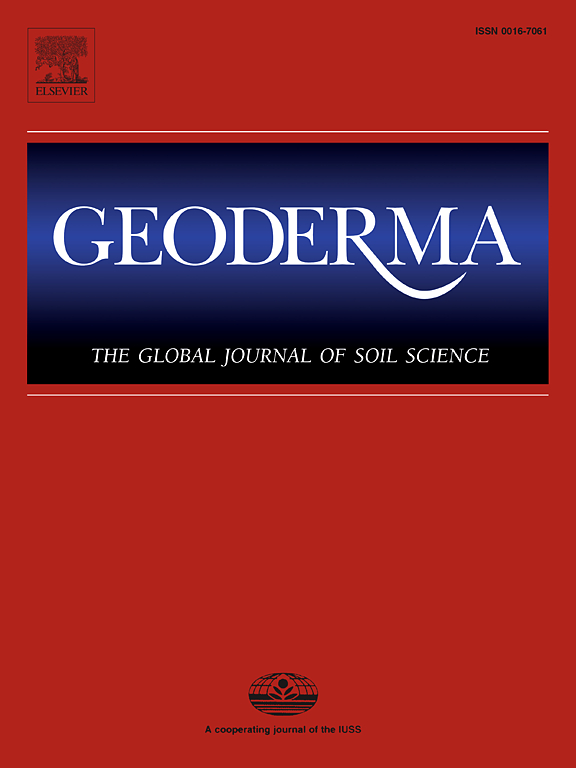Integrating satellite radar vegetation indices and environmental descriptors with visible-infrared soil spectroscopy improved organic carbon prediction in soils of semi-arid Brazil
IF 5.6
1区 农林科学
Q1 SOIL SCIENCE
引用次数: 0
Abstract
Soil Organic Carbon (SOC) is a paramount soil attribute for climate regulation, soil fertility, and agricultural productivity. The global demand for SOC testing came in response to expanding soil management practices aimed at ensuring soil health. This study explores enhanced accuracy in predicting SOC using soil spectroscopy (proximal sensing). A Soil Spectral Library (SSL), made from 127 soil profiles in Northeast Brazil, mainly by using soils from a semi-arid region, was used. Four modeling scenarios were employed, incorporating distinct covariable sets: 1) diffuse reflectance from laboratory spectroscopy (SSL); 2) diffuse reflectance and radar vegetation indices from all-weather and globally available Sentinel-1 satellite data; 3) diffuse reflectance and environmental factors; 4) all covariables. Integration of radar vegetation indices and environmental factors significantly improved SOC estimates by soil spectroscopy. Predicting SOC solely from SSL reflectance data yielded an average RMSE of 4.54 g kg−1 and R2 of 0.62. However, by using all covariables significantly reduced RMSE by approximately 13 % (to 3.94 g kg−1) and increased R2 by 14 % (to 0.71). This comprehensive approach, combining SSL, satellite radar vegetation indices, and environmental variables, substantially advances SOC spectroscopic prediction accuracy, offering valuable insights for applications in agriculture and environmental monitoring. These findings contribute to the reliability of proximal and remote sensing methodologies in soil testing.
求助全文
约1分钟内获得全文
求助全文
来源期刊

Geoderma
农林科学-土壤科学
CiteScore
11.80
自引率
6.60%
发文量
597
审稿时长
58 days
期刊介绍:
Geoderma - the global journal of soil science - welcomes authors, readers and soil research from all parts of the world, encourages worldwide soil studies, and embraces all aspects of soil science and its associated pedagogy. The journal particularly welcomes interdisciplinary work focusing on dynamic soil processes and functions across space and time.
 求助内容:
求助内容: 应助结果提醒方式:
应助结果提醒方式:


